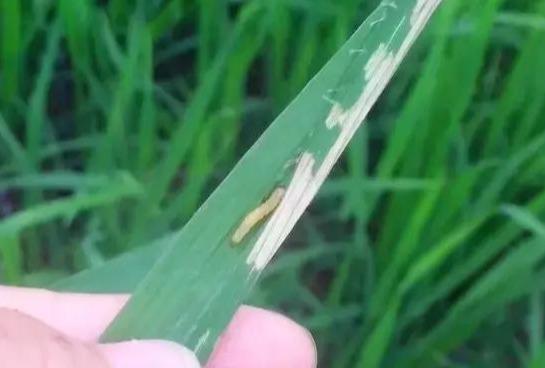In the hot June, the organic rice in our rice field is happily pregnant in the ears... But it has also attracted the "covetous heart" of the main pests of rice, the rice longitudinal leaf borer and the dimorph borer.
Popular Science Tips:
1. Rice longitudinal roll leaf borer with larvae embellished with silk longitudinal roll rice leaf adult buds, larvae hide in it to eat leaf flesh, leaving only the epidermis, forming white stripes, until the rice thousand grain weight decreases, the grain increases, resulting in yield reduction.

------------------------------------------------------
2. The dihua borer is only harmful to rice, and the larvae are used to drill the moth rice plant, and eat the leaf sheath tissue, ear buds and the inner wall of the rice stem, causing rice dry heart seedlings, dead pregnant ears, white ears, etc. as harmful, seriously affecting rice production.
So how to avoid the "harassment" of the above rice borers and produce green, organic standards of safe, healthy and nutritious rice? Don't be afraid, we have "Rice Guard" ----- red-eyed bees.
The red-eyed bee, as the name suggests, is a parasitic insect of the order Hymenoptera in the family Red-eyed bee. Adults are 0.5–1.0 mm long, yellow or yellowish brown, and most of the mating activity between females and males is done within the host, and the ovipositor at the end of the abdomen wants to drill inside the host and lay eggs in it.
Adult red-eyed bees and eggs →
How does the red-eyed bee stop the infestation of rice borers?
Adult red-eyed wasp mainly lays eggs in the eggs of rice borers, parasitizes eggs to take nutrients such as borer yolks and pupate from them, eventually causing the death of the host, achieving the purpose of directly killing pests from the egg stage.
The red-eyed bee is mainly aimed at the prevention and control of the rice longitudinal leaf borer and the dimorph borer, from the peak period of moth spawning to the peak period of the bee in stages and batches, 3 times per generation, with an interval of 5-7 days (the average life span of the red-eyed bee is 5-7 days), and 8 bee cards are released evenly per mu of rice field, and 24,000-28,800 red-eyed bees are released per mu.
Technicians explain how to release the red-eyed bee
Red-eyed bee card, 25 holes per card, 1000-1200 eggs per hole
Technicians demonstrate the method of releasing red-eyed bees and workers to release bees in the field
In order to produce organic standard, healthy and nutritious rice, Rio Tinto organic rice base does not apply chemical fertilizers, does not use pesticides, and uses biological control methods such as releasing red-eyed bees, which not only prevents the harm of rice borers but also provides safe and organic rice for the majority of consumers, which is efficient, environmentally friendly and zero pollution throughout the process, and is a good helper in rice bio-prevention!